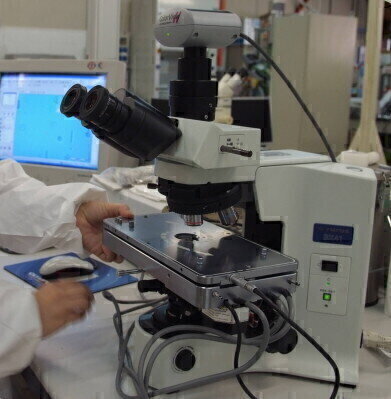Microscopy & Microtechniques
Studying the effects of temperature and shear flow in isotactic polypropylene
Mar 02 2011
Linkam Scientific Instruments have been chosen by the Polymer Technology Group of the Department of Chemical and Food Engineering of the University of Salerno as suppliers of a controlled shear system to study the effect of temperature and steady shear flow on the nucleation rate of spherulites in isotactic polypropylene.
One of the research programs of Professors Giuseppe Titomanlio, Roberto Pantani and their colleagues at the University of Salerno is the study of polymer crystallization enhanced by flow. This has attracted much interest because it implies the possibility of controlling the final morphology and the resulting mechanical and functional properties of semicrystalline polymers. An improved understanding of the fundamentals of flow-enhanced crystallization effects can help to tailor advanced transformation processes like injection moulding and extrusion. Indeed, during these processing operations, the polymer melt is subjected to complex and intense flow fields during or soon after which the polymer crystallizes. The crystallization kinetics and the morphology of the semicrystalline polymer in the final product, and subsequently its properties and quality, depend upon the orientation of the melt by effect of the flow.
The observation of changes in morphology and the measurement of nucleation density under both steady shear and quiescent conditions were performed using a polarized light microscope (Olympus BH-41), equipped with a Linkam shearing cell, CSS450. The Linkam system was chosen for its ability to accurately control changes in temperature and shear rate on the micro scale. The group of the University of Salerno was able to show clear differences under different shear rates and temperature cycles, which provided different thermal history to the samples.
The CSS450 optical shearing system allows structural dynamics of complex fluids to be directly observed via a standard optical microscope while they are under precisely controlled temperature and various shear modes. Using the cell, it is possible to study the microstructure evolution of complex fluids in great detail for many physical processes, flow-induced mixing and demixing of polymer blends, defects dynamics of liquid crystals, aggregation of red blood cells and their deformation by effect of flows etc. It is then possible to correlate the micro structural dynamics with rheological data thus gaining insight into the rheology of complex fluids.
Digital Edition
International Labmate 49.6 - Sept 2024
September 2024
Chromatography Articles - HPLC gradient validation using non-invasive flowmeters Mass Spectrometry & Spectroscopy Articles - From R&D to QC, making NMR accessible for everyone: Putting NMR...
View all digital editions
Events
Sep 22 2024 Messina, Italy
19th Confocal Raman Imaging Symposium
Sep 23 2024 Ulm, Germany
Sep 24 2024 Kielce, Poland
WoTS - World of Technology and Science
Sep 24 2024 Utrecht, Holland
Sep 25 2024 Frankfurt am Main, Germany



















